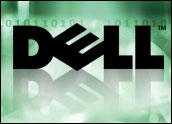
Last week saw a pair of announcements that could profoundly affect the way that companies plan, deploy and manage their datacenter infrastructures.
On the scale-up side of the house, at the SHARE conference, CA announced that it has installed a new integrated IBM zEnterprise mainframe (z196) and BladeCenter Extension (zBX) system. The company plans to use the hybrid environment to help customers leverage the cost and efficiency benefits of cross-enterprise systems management.
CA will also develop interoperability between key products in its extensive mainframe and distributed system software portfolio, providing customers the means to manage workloads that span both mainframe and distributed platforms, and offering a cross-enterprise view into areas such as application performance management and workload automation.
In the world of scale-out servers, SeaMicro announced the immediate availability of the new SM10000-64, which combines the company’s high-density server architecture with latest 64-bit Intel Atom N570 dual-core processors (the first Atom CPU to support virtualization and 64-bit OSes and applications).
The SM10000-64 uses 25 percent of the energy and space required by conventional scale-out systems and delivers up to 5X more bandwidth per compute unit than traditional servers, according to the company, providing customers a robust yet highly efficient solution for applications such as Hadoop and ApacheBench.
When used with a SeaMicro motherboard and power management, the N570 uses, at peak utilization, less than one watt for each gigahertz of compute.
Mainframes in the Mainstream
First, a bit about CA’s planned z196/zBX solutions. Across the broader IT marketplace, companies of every size continue to migrate applications and workloads to x86-based solutions, many of them equipped with VMware and other virtualization technologies. That has certainly benefited Intel and AMD, as well as x86-focused vendors, but it has put a hurt on traditional mission-critical Unix and mainframe architectures.
Some vendors have responded to this threat better than others — with IBM, to its credit, leading the way. The new z196 is easily the most powerful and scalable mainframe IBM has ever produced. As a result, the company’s 2010 mainframe-driven sales (by MIPS and revenues) are the highest in a decade, and they allowed the company to retain its crown as the leader in worldwide server revenues for 2010. Not bad for a technology that IBM competitors have claimed, for years, is on life support.
Yet it is the optional BladeCenter Extension (zBX) that adds an intriguing secret sauce to the already tasty z196. Consider the zBX as an integrated BladeCenter “sidecar” that supports both IBM POWER7- and x86-based servers that can be highly tuned for specialized workloads, including the IBM Smart Analytics Optimizer for DB2 and the WebSphere DataPower Integration Appliance XI50. In turn, these can be centrally managed via the z196’s robust management tools and solutions.
This is the critical issue underlying CA’s efforts around z196/zBX. There are certainly excellent commercial reasons for doing so — look no further than the 2010 surge in IBM’s mainframe revenues — but CA is ideally positioned to pursue such an effort. The company is a solid second, behind IBM, in sales of mainframe management solutions. (The pair represent about 60 percent of that market, with the remaining 40 percent spread between about 70 other players, according to CA).
More importantly, though, heterogeneous systems management is central to CA’s value proposition and a critical point if the company is to continue succeeding in an IT sector where systems vendors are attempting to take more and more of the lucrative management market in-house.
Scaling Out by Scaling Down
Good enough. So what’s up with SeaMicro’s new SM10000-64? First, the company is aiming to succeed in the lowest of the low end of x86-based systems, a sector that Intel dubbed “micro servers” a couple of years ago. In that emerging market, vendors like SeaMicro, Calxeda and others look to balance “good enough” compute performance with radically efficient power consumption in solutions whose TCO is a small fraction of the best that traditional scale-out systems can offer.
However, it would also not be inaccurate to say that SeaMicro envisions the future by glancing in the rear view mirror. During the past couple of decades, the data center ambitions of Intel’s x86 architecture have gotten a shot in the arm from at least two unexpected external sources — Linux and virtualization.
Both allowed companies to markedly increase system TCO by getting 1) more value out of existing IT assets; 2) out from under costly proprietary hardware platforms and software licenses; and 3) additional leverage from the existing skills of IT staff.
SeaMicro hopes to do the same via the Atom architecture, which despite its diminutive size and performance (as compared to Intel’s Xeon server solutions) is x86 all the way, meaning that applications designed for Intel and AMD platforms can run natively on SeaMicro. That’s a boon for developers (who won’t have to recompile their solutions) and could be attractive to enterprises looking to extend or maximize their x86 investments.
The Bigger Question
The bigger question is how well SeaMicro’s (along with other micro server vendors’) focus on energy efficiency will play in the market. The last time the IT industry saw a broad, concerted effort to embrace and promote such technologies was in 2006-07, when rising oil prices caused spikes in gasoline and other energy products. However, the enthusiasm for “green” technologies largely fizzled after the crisis passed and prices dropped.
Political unrest in the Middle East and increasing competition for oil resources is inspiring a similar dynamic today — but whether that will drive increasing (let alone, enduring) demand for SeaMicro’s solutions in the broader market is an open question. Additionally, the company and its micro server competitors could get dinged if Intel and AMD develop more energy-efficient versions of their existing server CPU architectures.
It seems entirely sensible that with the SM10000-64, SeaMicro has shifted its attention from general-purpose computing (the target of its initial offering last year) to providing a highly dense, virtualized and energy-efficient foundation for energy-sensitive, Internet-focused datacenters like those owned by Google, Yahoo, Amazon and many others. So does the SM10000-64 deliver in that regard? Yes, indeed. The system should inspire serious interest among Web-centric companies.
That said, neither SeaMicro’s nor CA’s solutions are appropriate for every company, let alone every application. However, they do prove the point that innovative notions and products aren’t always out in front of you. Sometimes you find them by fully leveraging the innovations of close partners or glancing in the rear view mirror.
In essence, by developing these new solutions, SeaMicro is working to achieve and CA is working to ensure their continuing relevance and success. In an IT industry where change is constant and laggards fall quickly behind, both companies’ efforts appear to be smart investments and smart for their long-term prospects.












































Social Media
See all Social Media